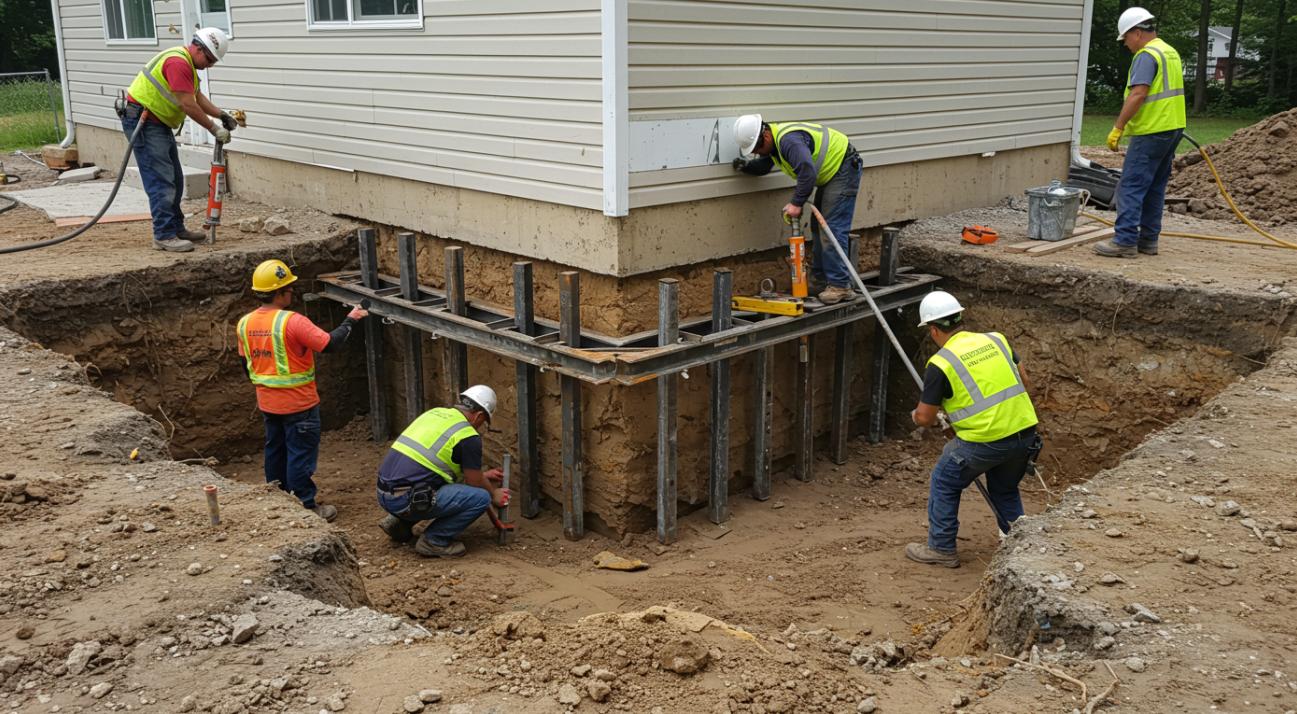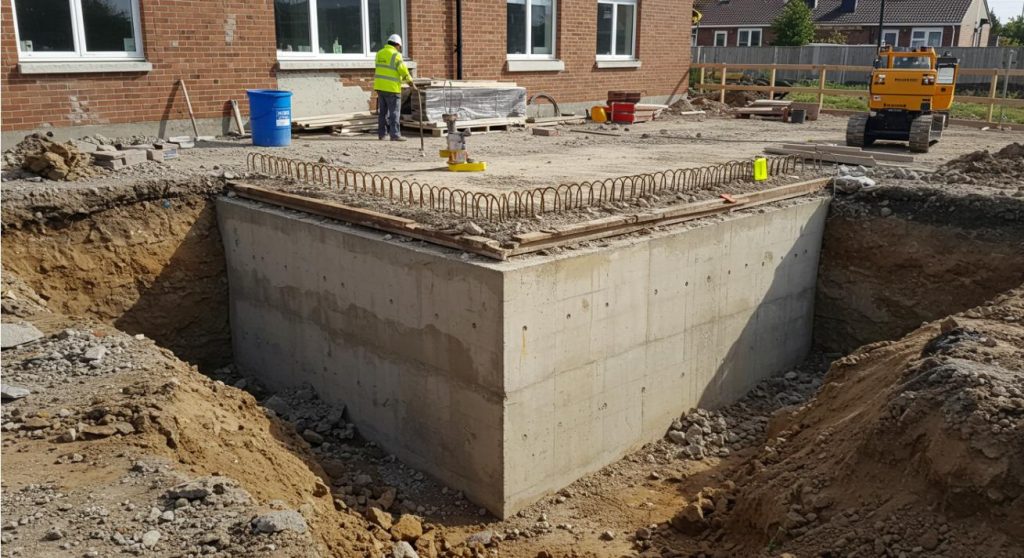Foundation Stability: How Underpinning Protects the Structure of Your Connected Building?

Your property’s foundation supports your entire structure, enduring daily stress and weight. If it becomes weak or damaged, the safety of your building is at risk. Maintaining a strong, stable foundation is essential. Underpinning is one of the most reliable methods to reinforce and protect it over time.
What Exactly is Underpinning?
In simple terms, underpinning refers to the technique of reinforcing or deepening an existing foundation. This typically involves adding structural support beneath the foundation or extending it deeper into the ground. When done correctly, this method stabilizes and strengthens buildings, protecting them from shifting ground conditions. Underpinning becomes particularly essential when connecting buildings side-by-side, preventing structural shifts and ensuring overall safety.
Common Signals You Might Need Underpinning
Spotting foundation damage early involves a keen eye and understanding what to look for. Cracked walls and floors, doors or windows not opening properly, or uneven floors are subtle red flags suggesting foundation instability. Sometimes it isn’t obvious, but if neighboring buildings have undergone construction, soil destabilization can inadvertently impact your own foundation. Regular inspections can catch these warnings before significant damage occurs.
Why Protecting Your Connected Building’s Foundation Matters?
Connected buildings, such as terraced homes, condominiums, or commercial side-by-side properties, have unique structural challenges. Damage to one building’s foundation can lead to instability in adjacent units, multiplying the potential risk. Underpinning proactively addresses foundation concerns, ensuring the interconnected stability that keeps each connected structure intact.
Preventing Soil Settlement Issues Effectively
Soil naturally shifts and settles over time due to moisture changes, weather conditions, and nearby construction. Underpinning counters these natural movements effectively, preventing soil settlement or subsidence from leading to structural compromises. This preventive measure helps maintain the safety and longevity of your interconnected buildings, avoiding expensive future repairs.
Adaptation to Building Modifications and Increased Loads
Occasionally your building undergoes alterations, adding extra floors, extending rooms, or upgrading equipment, all potentially increasing foundation loads. Original foundations could become insufficient to handle this pressure. In such cases, properly executed underpinning redistributes weight evenly, making existing structures capable of smoothly bearing the added stresses without risking unintended damages.

Techniques of Underpinning Used for Connected Buildings
While underpinning has numerous methods, choosing the proper technique depends largely on your structure type, soil conditions, and access limitations. Let’s explain several reliable underpinning approaches frequently utilized for connected buildings:
Mass Concrete Underpinning
The oldest underpinning technique is practical and still commonly used today. It involves excavating specific sections beneath existing foundations and reinforcing them with poured concrete. It’s ideal for straightforward solutions, though it demands considerable planning to avoid compromising structural stability during excavation. Mass concrete underpinning offers a resilient and economical solution for modestly accessible sites.
Mini-Piled Method
This modern technique uses small piles drilled deep into the ground, anchored securely onto stable soil layers or bedrock beneath structures. Mini-piling provides immense strength and is advantageous in areas with limited workspace, common in urban communities. Despite being somewhat expensive, its minimal noise production and vibration make it ideal for densely built residential or commercial areas.
Beam and Base Technique
Employing reinforced concrete beams beneath foundations, this underpinning method spreads out structural loads more evenly. This technique is often chosen when properties experience varying soil conditions beneath their foundations. Although meticulous planning and execution are required, beam and base underpinning offers substantial durability and robust protection against uneven subsidence impacts on adjoining buildings.
Comparing Different Underpinning Methods
For quick reference, here’s a clear overview and comparison between common underpinning techniques:
| Underpinning Method | Pros | Cons |
|---|---|---|
| Mass Concrete | Cost-effective, straightforward process | Time-consuming, limited depth capability |
| Mini-Piled | Ideal for limited access, low noise and vibration | Higher costs, requires specialized equipment and expert labor |
| Beam and Base | Even load distribution, robust in varied soil conditions | Complex implementation, longer installation time |
Professionalism: The Crucial Factor for Successful Underpinning
Underpinning is not a DIY-friendly process, and enlisting professionals is essential. Expertise in assessing structural conditions, recommending suitable underpinning methods, and precisely executing foundation reinforcement are benefits only experienced professionals offer. These specialists significantly reduce risks associated with incorrectly done underpinning and ultimately protect the safety and long-term value of your building.
Choosing the Right Underpinning Specialists
Before committing to underpinning services, it’s essential to evaluate contractors thoroughly. Verify references, seek testimonials, and confirm their experience handling similar projects. Effective communication and transparency are hallmarks of reputable underpinning experts. Never compromise expertise based purely on cost, as quality work enhances safety and prevents long-term headaches and future expenses.
Your building’s foundation isn’t merely about stones or concrete; it literally supports everything above ground. Underpinning shores up compromised foundations, stops soil shifts in their tracks, and maintains structural health for years to come. Choosing the right underpinning technique and partnering with skilled professionals ensures your foundation stays strong and resilient. Secure your property’s structural integrity today by investing in foundation stability. Don’t wait for cracks or other issues. Contact SUPREME CONCRETE BUILD, a trusted company, to discuss strategies tailored specifically to your connected building’s needs.
